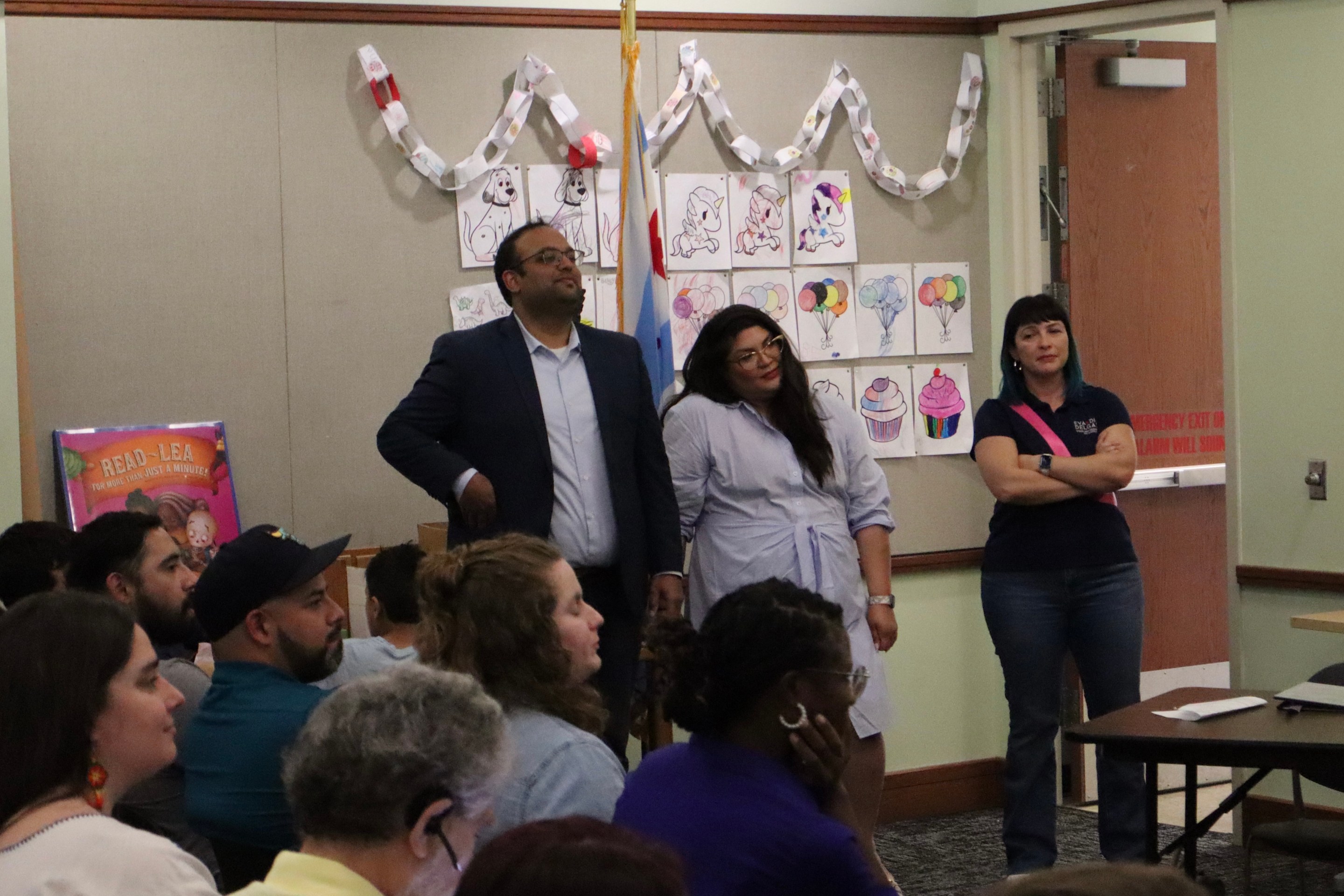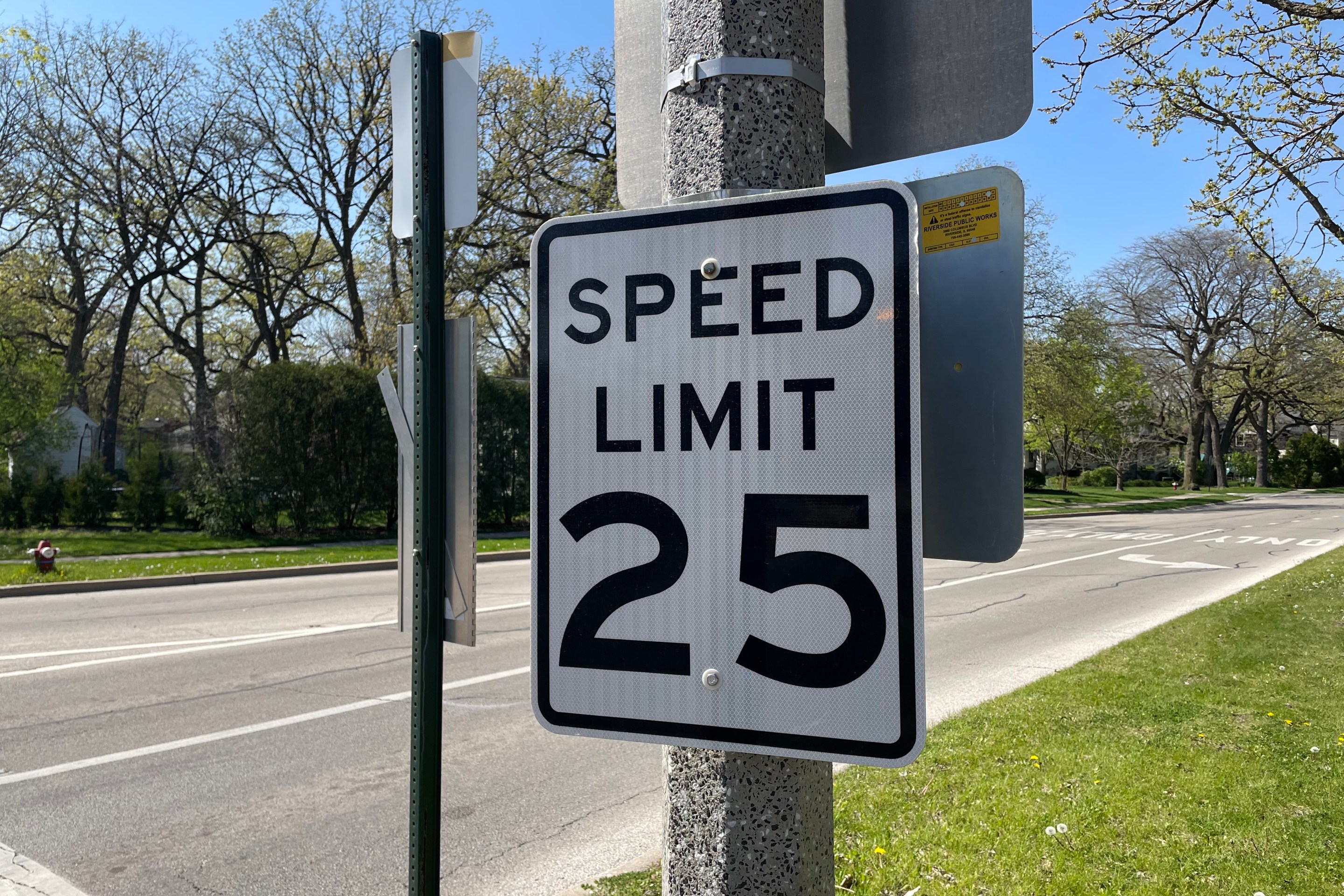6 streets will be pedestrianized for cafes, and the Leland Slow Street opens
7:23 PM CDT on May 29, 2020

The Leland Slow Street. Photo: John Greenfield
Today Mayor Lori Lightfoot held a press conference about Chicago's new "Open Streets" program of pandemic walk/bike/cafe interventions. You can check out our live tweets from the presser for details about what was said. There weren't a lot of new revelations about Slow Streets, which launched today with the opening of one on Leland Avenue, and unfortunately Lightfoot characterized it as "recreational" program, rather than one that will enable safe, socially-distanced essential transportation. But there was exciting news that six streets around the city will be pedestrianized to make room for socially-distanced restaurant dining, which will be a shot in the arm for an industry that is struggling during COVID-19.
“This vision to reimagine some of Chicago’s residential streets and key restaurant corridors allows for increased social distancing and adherence to public health guidance as we begin the gradual reopening of our great city," Lightfoot said in a statement. "In coming days and weeks, I look forward to expanding these pilot projects citywide with input from the public and local stakeholders.”
Expanded Outdoor Dining
Working with the Illinois Restaurant Association and its members, local chambers of commerce, and local aldermen, the City has identified six streets that will be closed to through traffic during certain hours, allowing restaurants to place cafe tables in the street for socially-distanced service. Bars that serve food are also eligible to have cafes. The corridors include some of Chicago's yummiest dining districts.
- Chatham: 75th Street from Calumet Avenue to Indiana Avenue (This is perhaps the city's premier strip for Black-owned restaurants, including Original Soul Vegetarian, Lem's Bar-B-Q, Mabe's Deli, and Brown Sugar Bakery. They ought to extend the pedestrianized zone a block east to include 5 Loaves Eatery.)
- Lakeview: Broadway from Belmont Avenue to Diversey Parkway (There are tons of restaurants and taverns here, but highlights include Dry Hop Brewers, The Bagel, Chilam Bilam, Crisp, and Renaldi's Pizza.)
- Little Village: 26th Street from Central Park to Harding Avenue (26th is Chicago's busiest retail district outside of the Magnificent Mile, and one of the city's top destinations for Mexican food. This stretch includes Taquerías Atotonilco, Bombon, Las Tres Campanitas, Birrieria Patinos Ocotlan, Nuevo Leon, and several more eateries.)
- Rush and Division: Rush Street from Oak Street to Cedar Street (This upscale district is centered on lovely, triangular Mariano Park, popularly known as the Viagra Triangle. Restaurants include Hugo's Frog Bar, Dublin's Bar & Grill, Velvet Taco, Blue Agave, Carmine's, Tavern on Rush, and multiple steakhouses.)
- Near West Side: Taylor Street from Loomis Street to Ashland Avenue (Known for Italian food, including Pompei, the Rosebud, Conte Di Savoia, and Francesca's on Taylor, this strip also has diverse offerings including Mexican, Thai, and Portuguese-South African.)
- West Loop: Randolph Street from Expressway no further than Elizabeth Street (One of the city's hottest business districts for foodies, this has tons of choices, but notables include Au Cheval, Haymarket Brewery, Bad Hunter, Girl & the Goat, Little Goat Diner, Cruz Blanca, and Forno Rosso.
While the dining districts are pretty well spread across the city, unfortunately most of these zones are in majority-white neighborhoods, which reflects the fact that, as of 2013 (and not seems to have changed since then) almost all existing sidewalk cafes were in those areas. However, beginning on June 1, chambers of commerce, Special Service Areas, business associations, and restaurants in groups of three or more may submit an application for Expanded Outdoor Dining. Cafe service will allowed until 11 p.m., but the city's 9 p.m. curfew for liquor sales during COVID-19, a strategy to prevent unsafe congregation outside liquor stores, will still be in effect.
Slow Streets
CDOT has been collecting input for several weeks on pandemic transportation issues, including the covidmobility@cityofchicago.org email address, but most of the input has come from the North and Northwest sides so far. During today's press conference Chicago Department of Transportation commissioner Gia Biagi said the city plans to reach out to other parts of town for feedback on the Slow Streets program and other interventions more proactively.
CDOT has received more than 500 requests from Chicagoans, mostly about Slow Streets. "CDOT will continue to work with aldermen and other community and cultural organizations to determine ways that street design can address local issues beyond social distancing—from transit access and speeding up buses to public and traffic safety, or to address lack of open space in neighborhoods," the city stated.
In early April the Active Transportation Alliance stated that the pandemic was not an appropriate time to advocate for more space for walking and biking. The group has since pivoted on that point, and today they put out a statement arguing that "Shared streets are a first step to help Chicagoans feel safe walking and biking during the pandemic, but much more needs to be done. To date, the city’s plans fail to address the mobility needs of the areas hit hardest by COVID-19."
In addition to broadening public input, ATA called for focusing on hard-hit Black and Latino communities; planning around business districts; developing "a toolbox of possible interventions" to share with community leaders; incorporate transit elements like enlarged bus waiting areas and bus lanes; and leveraging existing programs, resources, and initiatives like the the Streets for Cycling Plan 2020 and the Vision Zero program to guide safety improvements.
The city provided no information on the specific roadways in the coming Slow Streets network. However, 46th Ward alderman James Cappleman stated in his newsletter today that Leland Avenue in his ward, east of Clark Street, will not be a Slow Street due to conflicting construction projects. Annoyingly, Cappleman said Streetsblog's previous reporting that that portion of Leland was slated to be a Slow Street was "errant" because that portion "was never going to be a part of this plan." Cappleman's statement is provably false, because that stretch is still listed on the city's permits page as a "Shared Street for physical distancing."
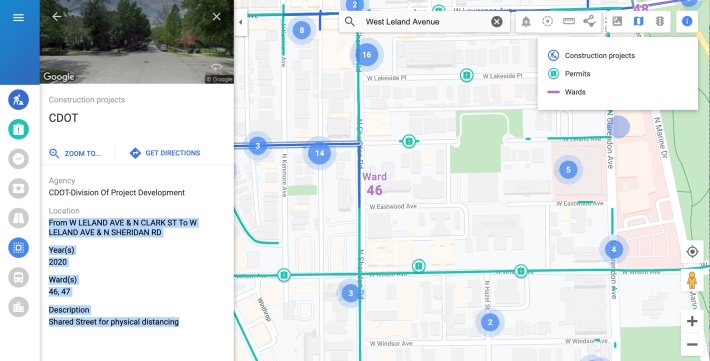
On a more positive note, in this reporter's opinion, today's launch of the Leland Slow Street between Clark Street and Lincoln Avenue in the neighboring 47th Ward was inspiring, with the open street drawing many families with young kids and other residents to walk, bike, and scoot. To their credit, drivers visiting local destinations were generally respectful and cautious, although my sense was that a few hadn't gotten the memo that through traffic is prohibited. Local alderman Matt Martin says that more signs are on the way to alert drivers drivers to expect pedestrians in the roadway.
Katie Heupel, who rode bikes on the Leland with her kids around noon today said she was pleased with how the Slow Street turned out. "It was fun, and great practice for the kids to ride safely in the street. I was surprised it wasn’t busier yet, but I think it will pick up this weekend. Car drivers were friendly, careful and waved. There was one [driver who] pulled out of an alley quickly, but otherwise it felt safe."
Below a gallery of scenes from the Leland Slow Street this morning and early afternoon. (Photos with children's faces visible were taken with permission from their parents.) Just think it would be like if families and other residents all over the city had car-lite streets like this for safe transportation and recreation.

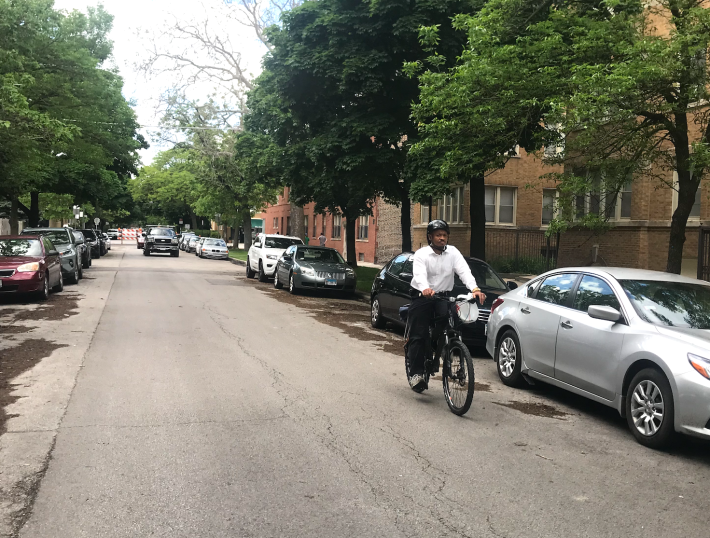
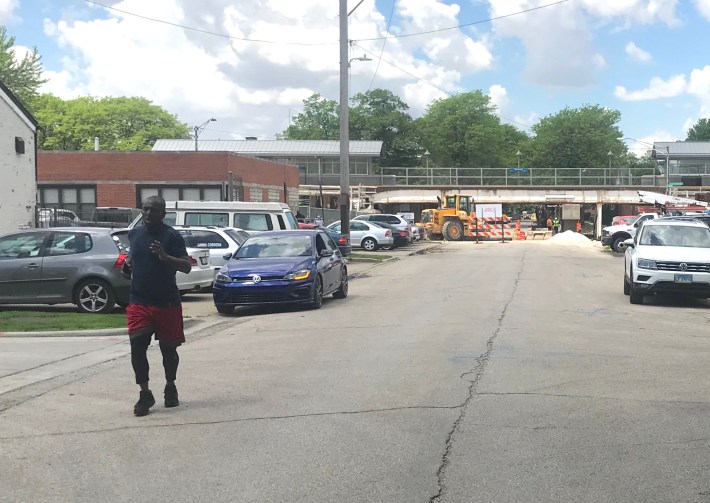
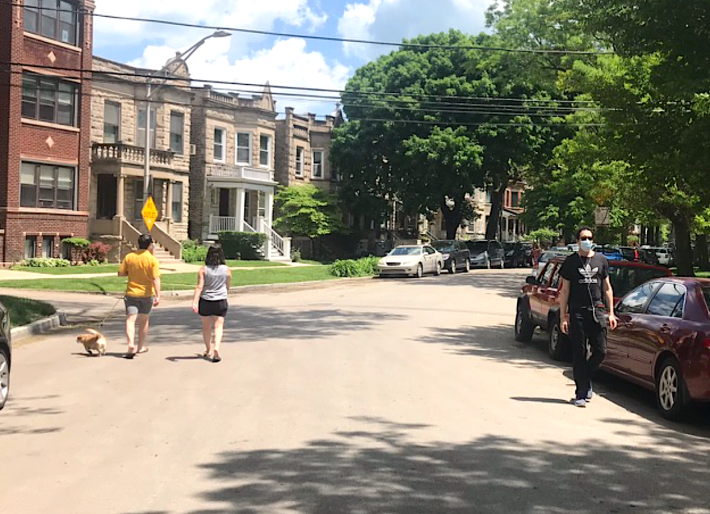
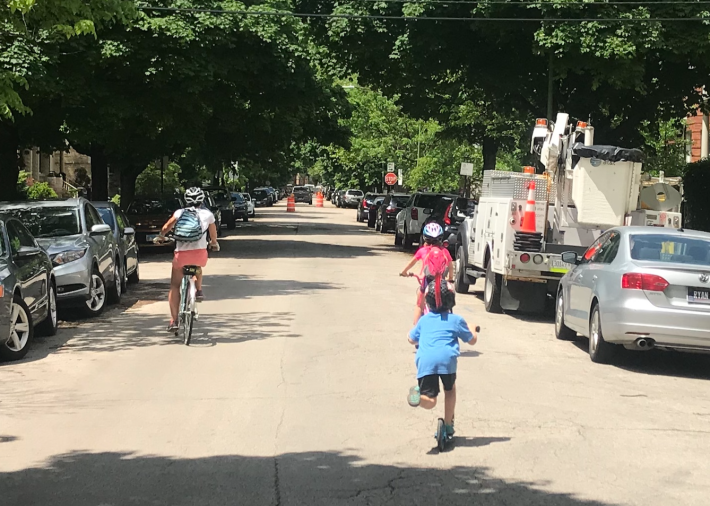
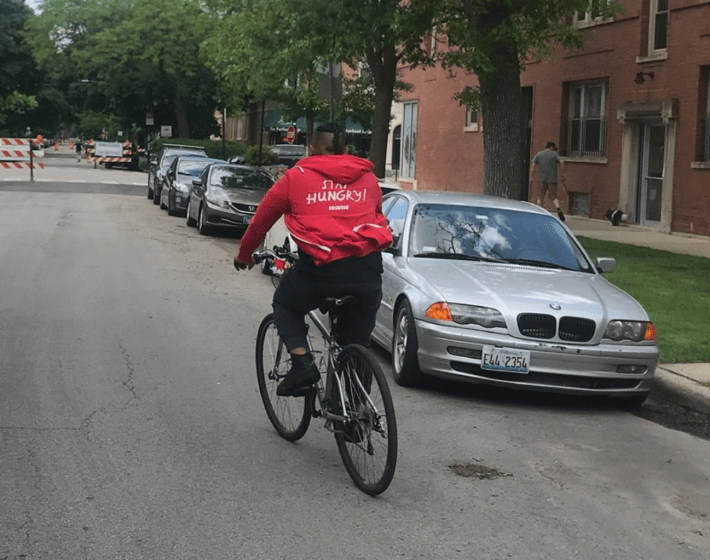
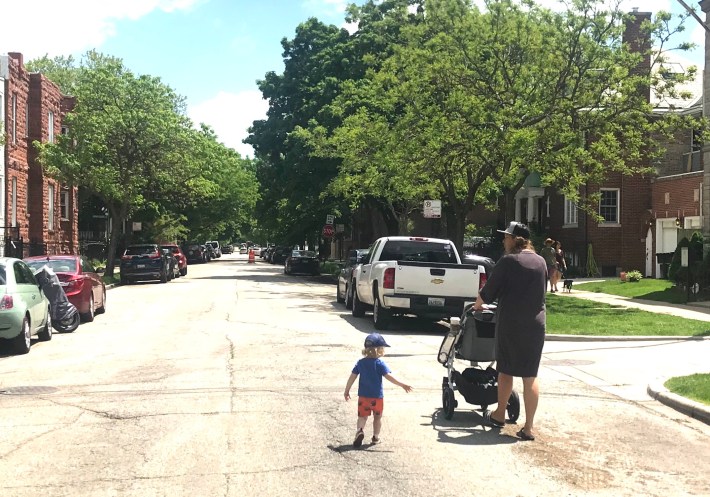
In addition to editing Streetsblog Chicago, John writes about transportation and other topics for additional local publications. A Chicagoan since 1989, he enjoys exploring the city on foot, bike, bus, and 'L' train.
Stay in touch
Sign up for our free newsletter
More from Streetsblog Chicago
State legislators pushing for merging CTA, Pace, and Metra into one agency spoke at Transit Town Hall
State Sen. Ram Villivalam, (D-8th) and state Rep. Eva-Dina Delgado (D-3rd), as well as Graciela Guzmán, a Democratic senate nominee, addressed the crowd of transit advocates.
Today’s Headlines for Tuesday, April 30
Equiticity and ATA: Passing a 25 mph speed limit should be combined with street redesigns that calm traffic
Equiticity, a mobility justice nonprofit, says the new speed limit shouldn't involve increased enforcement, which it says would disproportionately impact drivers of color


